| item(s), Total: $0.00 View Cart |
| Shopping cart is empty. |
As the weeks roll on; we'll have more and more varieties of Spring/Summer vegies available in both seed & seedlings. Come on in over the next month and check out our range, or feel free to call up if you're looking for something in particular. Later this month our workshop season swings into action - check out our Events page right here for all the details. By clicking on each event you can see the description, time & cost of each session.
Jess came into the GLSC family last year with a whirlwind of energy and love of all things gardening. She has just completed her Cert 3 in horticulture, conservation and land management and is applying her studies to help our Green Life customers grow their knowledge and their gardens. Come on in and say hello to Jess (or any one of our team) - we hope to see you soon @ Green Life Soil Co. Happy Gardening from all of us @ GLSC. In this newsletter:Jobs to do in the August Garden Jobs to do in the August Garden
What to Plant Now There's still time to get some crops in the ground of potatoes, onions, peas, broad beans. And there's Asparagus, Rhubarb & Jerusalem Artichokes - just about to arrive in store @ GLSC. There's still time to get some crops in the ground of potatoes, onions, peas, broad beans. And there's Asparagus, Rhubarb & Jerusalem Artichokes - just about to arrive in store @ GLSC.
Click onto the highlighted text above to go to the fact sheets for these plants for the detailed growing information you need to get started. (asparagus - pictured right) You can also begin to start some seeds off in trays - but my advice would be to do a few only. There's still plenty of time, and no need to risk all your seed on one roll of the dice. Remember our free downloadable When to Sow guide for Perth also has some handy tips on germination temperatures and times - check it out here.Vegies to consider include: Artichokes (Globe & Jerusalem), Asian Greens, Asparagus, Beans, Broad Beans, Beetroot, Cabbage, Carrots, Celery, Choko, English Spinach, Kale, Kohl Rabi, Leek, Lettuce, Onion, Parsnip, Peas, Potato, Radish, Silverbeet, Snow Peas, Spring Onion, Turnip. Plus many herbs will grow well now - still time to grow Coriander, for example. See our Planting Guide for Herbs here (free download). Mite-y Garden Pests
While there are many different types of mites (some of them are major agricultural pests); as home gardeners the two we mostly come across are Red-legged Earth Mites and Spider Mites (sometimes called Two Spotted Mites or Red Mites* - just to be confusing.) They're two distinct species - Red-legged Earth Mites have the fantastic name Halotydeus destructor while Two Spotted Mites are Tetranychus urticae. (Pictured above right - Two Spotted Mite adult & egg. Photo courtesy Ag Dept of WA. Pictured below right - also a Two Spotted Mite; but with red colouration. Photo courtesy Pestnet.org.)
Once numbers have built up, you will notice the damage they're doing to your plants. The mites are usually active on the leaf underside. Being sap suckers, they pierce the leaf surface and damage the cellular structure of the leaf, causing mottling, yellowing and tissue death. In advanced attacks plants can be severely stunted and may even die. Mites can be pests of broadacre crops, vegetable crops, and tree crops. Unfortunately due to widespread spraying, many have built up resistance to insecticides/miticides, but luckily there are many natural predators - so as an organic gardener we can certainly give nature a helping hand to attract the good bugs!
Spider Mites or Two Spotted Mites (TSM) can be almost clear, yellow-green to brown, but adults have two large dark spots on their back. *In Autumn, the colouring can be pinky-red; hence the name 'Red Spider Mite' is another name commonly given to the same critter. (See 2nd photo in this article - this is also a Two Spotted Mite!) Mites produce webbing - which they use in many ways (moving around, breeding, etc) and Two Spotted Mite explosions can actually cover the growing tips of a plant and the leaf underside with a fine webbing coating; a tell-tale sign you've got a good infestation. (Photo below right shows webbing on strawberry plant.) So what can you do to control them organically?
Healthy plants are far less susceptible to attack. Jackie French observes that plants starved of nitrogen & phosphorus tend to be more susceptible. She recommends spraying with manure tea twice a day at the first sign of attack. Other research suggests soil high in available silica helps. Rock Dust and DE in the soil would be beneficial. Another option as a foliar spray is the Zeogrow fertiliser we carry. Biodynamic farmers use their preparation 501. If spider mites are very active on the tips of your plants, tip pruning may help give the plants some breathing space while you try other treatment methods. Mites don't tend to like moisture - so high pressure hosing (best early in the day) every day for up to a week will impact numbers. Giving your indoor plants a rinse under the shower will have the same effect. Overhead watering (particularly in very hot weather) can be helpful. Green Harvest's excellent website also recommends a DIY spray of 2% Rosemary oil in water (with a dash of soap to help it stick), claiming it will work against TSM but not affect predatory mites. Home made Garlic spray is another well used option against sap sucking insects (including mites). A hand held vacuum cleaner can also remove mites from your plants. (Also a good way to deal with Whitefly. And to mystify the neighbours.) Beneficial Insects
Another treatment is to dust or spray the plants with sulphur - although this is considered a 'heavy duty' treatment and best as a last resort. Don't use sulphur in hot conditions or anytime you've used an oil spray recently - it will damage your plants. Remember the mites are mostly active on the leaf underside - so you'll need to ensure you get good coverage there. For vegetable crops, basil is said to be a good companion to assist in preventing TSM (and probably attracts beneficial insects too). Practice crop rotation and make sure any infected plant material is disposed of in the bin, or burnt. VIP Special Offer
Our Blood & Bone contains nothing but the goodness of blood meal, feather meal and rock dust - so you're getting a range of nutrition including trace elements. Oh, and it's also Certified Organic. So what are you waiting for? Come on in and grab your Spring garden goodies and remember to mention the VIP Blood & Bone special to the Green Life team member who's looking after you. If placing orders online, mention 'free VIP Blood & Bone offer' in the delivery instructions box. Ordering over the phone? Ask our team as you're placing your order. Limit of one per customer & valid until COB 31st August. Photo Competition Winner for AugustCongratulations to Lorraine H. who sent in a whole heap of photos of her garden as a work in progress (see below). She had this to say: What I love most about gardening is changing something that was ugly and barren to beautiful; it makes coming home so nice. Although it’s winter the front verge is very colourful. The photos show the garden in February this year when soil was delivered; and June now things are getting established. THANKS Lorraine for sending in your pictures. You're the winner of this months competition and have scored a $50 voucher to spend with us @ Green Life. Remember - you've got to be in it to win it - so send in your photos via email or to Facebook with a few words as to what's going on in your garden, and what you love about it, and next month it might be YOU.
Retailer Update
All stockists carry different items (so give them a call and check!). If there's an item of ours they don't usually carry, in most cases they'd be very happy to add it to their next order for you. Beaufort Garden World - Inglewood 9271 0585
|



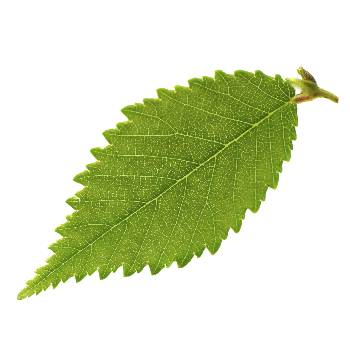 Hello again - here we are more than halfway through winter; so you know what that means; SPRING is literally just around the corner! Days are getting noticeably longer week on week and the plants will be noticing too! Let's hope there's still some good rain to be had - I'm sure there's still some very chilly days ahead too; we're not out of frost danger yet (if you live in those susceptible areas).
Hello again - here we are more than halfway through winter; so you know what that means; SPRING is literally just around the corner! Days are getting noticeably longer week on week and the plants will be noticing too! Let's hope there's still some good rain to be had - I'm sure there's still some very chilly days ahead too; we're not out of frost danger yet (if you live in those susceptible areas). We'd like to say congratulations to one of our team members - Jess (pictured right) - she's just completed her course @ Midland TAFE. Those of you who went along to Perth City Farm's Indoor Plant Market last week would have met Jess on GLSC's stand.
We'd like to say congratulations to one of our team members - Jess (pictured right) - she's just completed her course @ Midland TAFE. Those of you who went along to Perth City Farm's Indoor Plant Market last week would have met Jess on GLSC's stand. 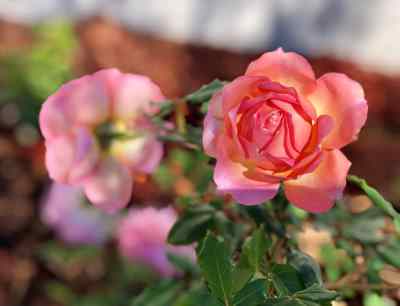 Rose pruning. If you haven't already done so, it's time to give Roses and other perennial flowering plants their winter prune to encourage a flush of spring blossoms. (Thanks to our photo comp winner Lorraine for this lovely pic of one of her roses!)
Rose pruning. If you haven't already done so, it's time to give Roses and other perennial flowering plants their winter prune to encourage a flush of spring blossoms. (Thanks to our photo comp winner Lorraine for this lovely pic of one of her roses!).jpg) Select & plan your seed propagation. You can start to raise some Spring vegies. A few seeds in trays that you can move around and keep warm will give you a great head start (providing they survive the rest of winter). A few seeds sown every few weeks will mean you'll jag the right time early on - covering your bets. Jackie French recommends planting out only once the soil is warm enough to sit on bare-bummed. (You might want to warn your neighbours first!)
Select & plan your seed propagation. You can start to raise some Spring vegies. A few seeds in trays that you can move around and keep warm will give you a great head start (providing they survive the rest of winter). A few seeds sown every few weeks will mean you'll jag the right time early on - covering your bets. Jackie French recommends planting out only once the soil is warm enough to sit on bare-bummed. (You might want to warn your neighbours first!)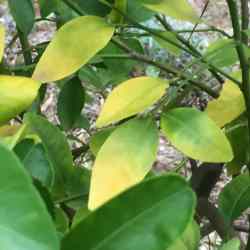 Get ready to feed up your fruit trees. It is possibly a little early at the start of the month, but heading to the end of August/early September (and depending on the weather) it's time to feed up your Citrus trees, and your deciduous trees that will be emerging from Winter dormancy. We recommend a good fertiliser or soil improver that contains rock dust (or use rock dust separately) - the trace elements will lead to healthier plants and better tasting fruit.
Get ready to feed up your fruit trees. It is possibly a little early at the start of the month, but heading to the end of August/early September (and depending on the weather) it's time to feed up your Citrus trees, and your deciduous trees that will be emerging from Winter dormancy. We recommend a good fertiliser or soil improver that contains rock dust (or use rock dust separately) - the trace elements will lead to healthier plants and better tasting fruit. Recently via social media, I was contacted by someone wanting advice on how to deal with mite infestations on their plants. I thought it would be a worthy topic to research and write about - so here we go!
Recently via social media, I was contacted by someone wanting advice on how to deal with mite infestations on their plants. I thought it would be a worthy topic to research and write about - so here we go!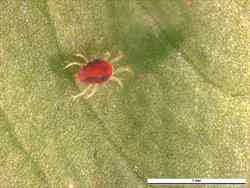 Mites are actually arachnids and not insects - having eight legs, and are really quite tiny; the size of a full stop - making them quite difficult to spot with the naked eye. To identify mites, you'll need a good magnifying glass and good lighting. (A magnifying glass or hand lens should be part of your gardening kit - they do come in handy to help ID many pests and diseases.) Also check a reliable reference to ID a pest vs. a beneficial species. The Ag Department's My Pest Reporter App will be helpful with this.
Mites are actually arachnids and not insects - having eight legs, and are really quite tiny; the size of a full stop - making them quite difficult to spot with the naked eye. To identify mites, you'll need a good magnifying glass and good lighting. (A magnifying glass or hand lens should be part of your gardening kit - they do come in handy to help ID many pests and diseases.) Also check a reliable reference to ID a pest vs. a beneficial species. The Ag Department's My Pest Reporter App will be helpful with this. 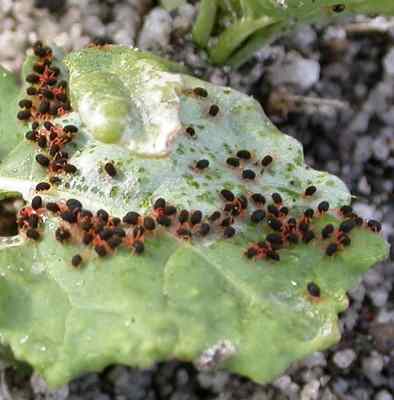 Red-legged Earth Mites (RLEM) have a black body, with 8 pinky-orange legs. (Pictured right RLEM & damaged caused to leaf tissue - Photo courtesy Ag Dept of WA.) They can have several generations a year, with the female creating 'diapause eggs' which are dormant in the hotter months, and hatch once conditions are suitable following the autumn rains. They are more active in May to October, and tend not to be active in the hotter weather. As the name suggests, they spend a lot of time on the soil surface, and congregate on leaves to feed - being attracted to volatile compounds released from damaged leaves. Young seedlings are particularly susceptible.
Red-legged Earth Mites (RLEM) have a black body, with 8 pinky-orange legs. (Pictured right RLEM & damaged caused to leaf tissue - Photo courtesy Ag Dept of WA.) They can have several generations a year, with the female creating 'diapause eggs' which are dormant in the hotter months, and hatch once conditions are suitable following the autumn rains. They are more active in May to October, and tend not to be active in the hotter weather. As the name suggests, they spend a lot of time on the soil surface, and congregate on leaves to feed - being attracted to volatile compounds released from damaged leaves. Young seedlings are particularly susceptible. A good tip is to clear up cape weed, thistle, marshmallow weed, nightshades and plantain weed from your gardens; these broad leaf weeds are a common host for mites.
A good tip is to clear up cape weed, thistle, marshmallow weed, nightshades and plantain weed from your gardens; these broad leaf weeds are a common host for mites. More 'heavy duty' treatments for mites can include Eco-oil (which will smother the mites), Eco-neem (which disrupts the growth and/or breeding cycle of many insects), Pyrethrum, and potassium soap sprays like Natrasoap. All of these treatments are best used as contact sprays directly onto infestations. As none of these options are systemic (absorbed into the plant tissue) you may need several treatments 3-7 days apart, and close observation to make sure new hatchlings don't breed up again. (Photo right - mite damage on tomatoes.)
More 'heavy duty' treatments for mites can include Eco-oil (which will smother the mites), Eco-neem (which disrupts the growth and/or breeding cycle of many insects), Pyrethrum, and potassium soap sprays like Natrasoap. All of these treatments are best used as contact sprays directly onto infestations. As none of these options are systemic (absorbed into the plant tissue) you may need several treatments 3-7 days apart, and close observation to make sure new hatchlings don't breed up again. (Photo right - mite damage on tomatoes.)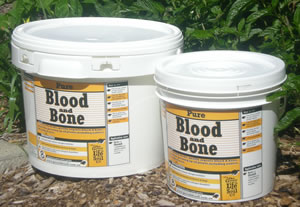 As our gardens are waking up from Winter, it's time to give our gardens a feed. So to help you with this, we're giving our VIP's a FREE 3kg Blood & Bone tub with purchase over $50. (And remember - you can bring in your own tubs for a refill and save plastic.)
As our gardens are waking up from Winter, it's time to give our gardens a feed. So to help you with this, we're giving our VIP's a FREE 3kg Blood & Bone tub with purchase over $50. (And remember - you can bring in your own tubs for a refill and save plastic.)
.jpg)
.jpg)
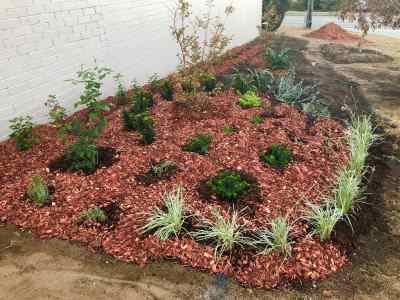
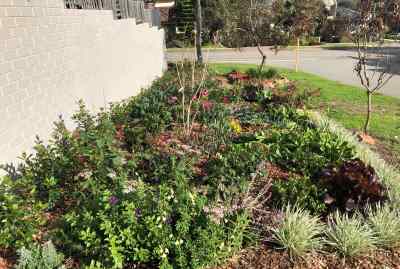
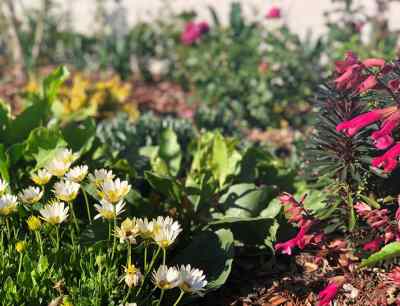
 Please support the local independent retailers who support us. They've got great local knowledge and are happy to help.
Please support the local independent retailers who support us. They've got great local knowledge and are happy to help.




















